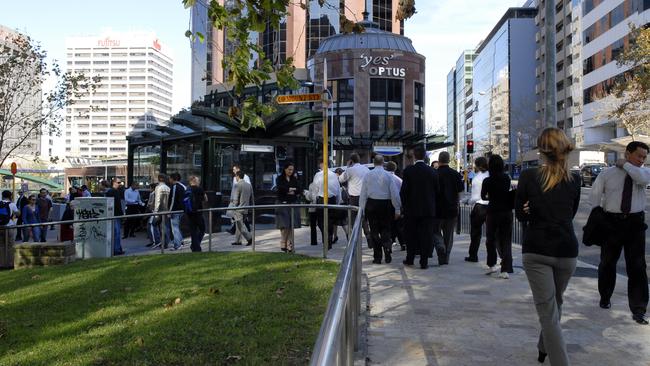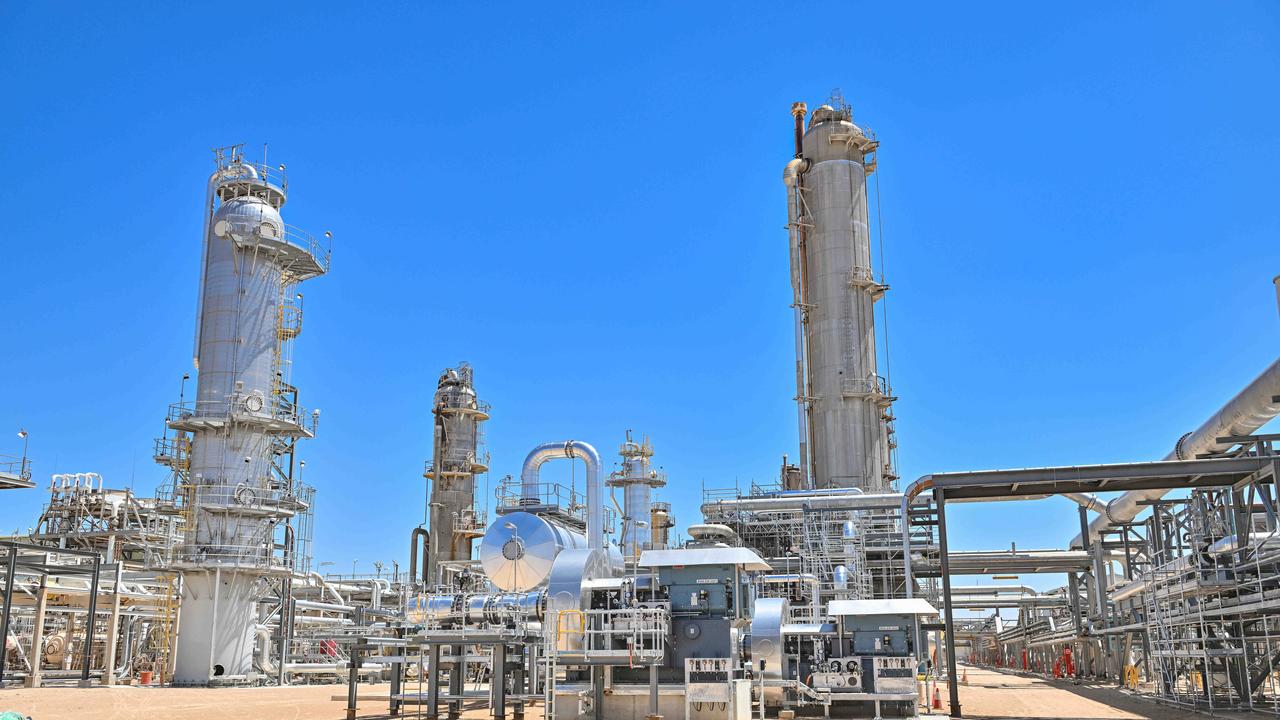Trade jitters can’t dull reason for reporting season optimism, says UBS
Strategists expect some optimism in corporate outlook statements as the economy appears to have troughed and consumers are turning positive as interest rate cuts loom.

Business
Don't miss out on the headlines from Business. Followed categories will be added to My News.
Despite a number of challenges market strategists see reason for optimism this reporting season.
High valuations for the major banks have left the overall market multiple looking stretched versus its historical norms, and earnings growth estimates are feeble for the current financial year.
On a 12-month forward basis, the ASX 200 index is currently trading on a price-to-earnings multiple of about 17.9 times – which is about 22 per cent above its long-term average of 14.7 times.
ASX 200 earnings per share is expected to rise just 1.1 per cent in the 2025 financial year before picking up to 7.1 per cent in FY26. Expectations of a pick-up in corporate earnings are seen as a plus for the outlook.

Then again, some strategists have for more than a year been predicting a “trough” in earnings.
There’s also heightened uncertainty about US trade policy and the impact on global growth.
So far, tariffs have been much less than previously threatened by US President Donald Trump.
The 10 per cent tariff increase on Chinese imports that took effect on Tuesday was nothing like the 60 per cent “day one” tariffs Trump had campaigned on.
However, China announced its own tariffs on some US imports. Trump has threatened to double tariffs on countries which retaliate – as China has done. It is not hard to see a 40 per cent tariff on China and less demand for materials from Australia, barring significant domestic stimulus in China.
Trump has also vowed to impose tariffs on the EU, semiconductors, steel, metal, oil and gas, and pharmaceuticals. A review of US trade policy across the board is due on April 1.
But while Australian importers face higher costs after the Australian dollar fell about 10 per cent in the December quarter, the exchange rate will be a tailwind for US dollar earners this reporting season.
Strategists expect some optimism in corporate outlook statements as the economy appears to have troughed and consumers are turning positive as interest rate cuts loom.
“Economic data over the last few months has shown that the Australian economy has not just avoided a recession but is recording better data across a range of measures, with slowing inflation, accelerating retail sales, strength in jobs and better wage income,” UBS equity strategist Richard Schellbach said.
The September quarter now appears to have been the low point of the current economic cycle, and UBS expects the December half-year results and outlook statements to start reflecting the improved set of conditions that formed through the December quarter.
Australian analysts have been downgrading their earnings growth estimates for the past two years.
But the pain has been very much driven by the resources sector, according to Mr Schellbach.
By contrast, pessimism in the financial and retail sectors have has been removed from earnings estimates for almost 18 months, while tech and tech-related businesses have had sustained tailwinds.
“On balance we expect company results through February to show that these earnings trends still remain,” Mr Schellbach said.

A marked deceleration in the pace of inflation over the past 12 months meant that nominal economic growth slowed noticeably over recent quarters.
But while companies may acknowledge this handbrake on revenues, they face easier revenue comparisons. Improving purchasing manager indexes and solid population growth should help revenue growth from here, according to UBS.
Meanwhile, concerns about the ability of Australian-listed companies to maintain their profit margins have proven to be unfounded.
Companies overall have been able to continue passing through cost increases to consumers.
“The latest monthly data points still show business selling prices moving commensurately with their input costs, leading our ‘pricing power beta’ measure to suggest that profit margins have probably already troughed at mid-cycle levels,” Mr Schellbach said.
“With the unemployment rate remaining low over the last six-months, this dynamic of being able to pass through costs remains favourable in most industries.”
The UBS “Evidence Lab” consumer survey of 1000 adults across Australia for the December quarter was the strongest on record, showing consumers were “noticeably more optimistic on their outlook”.
On spending, income, savings, financial outlook, likelihood to buy a home, and travel spending, the high-income earners showed “meaningfully more optimism, as they have become energised on the prospect of interest rate cuts from the RBA coming through over the next six months”.
Morgan Stanley equity strategist Chris Nicol said Australian corporate earnings seem to have “inflected at the lows”, meaning the upcoming result season should be “the trough” in earnings.
But he foresaw residual risk linked to still-weakening aspects of the domestic economy and also commodity-linked earnings where ongoing volatility is expected.
Macquarie’s FOMO (fear of missing out) Meter for the local stock market fell to 0.68 in January and sentiment has generally weakened since the euphoria that followed Trump’s election victory last November. That’s despite a 4.6 per cent rise in the ASX 200 to a record high of 8532.3 last month.
“We think sentiment can cool further, as Trump’s policies and the tightening of financial conditions caused by the recent spike in bond yields drive more negative economic surprise,” Macquarie’s Australian equities strategist Matthew Brooks said.
“We still think a better time to buy risk will be near when surprises bottom, and based on a typical lag to bond yields we think this could be in April.”
Originally published as Trade jitters can’t dull reason for reporting season optimism, says UBS



